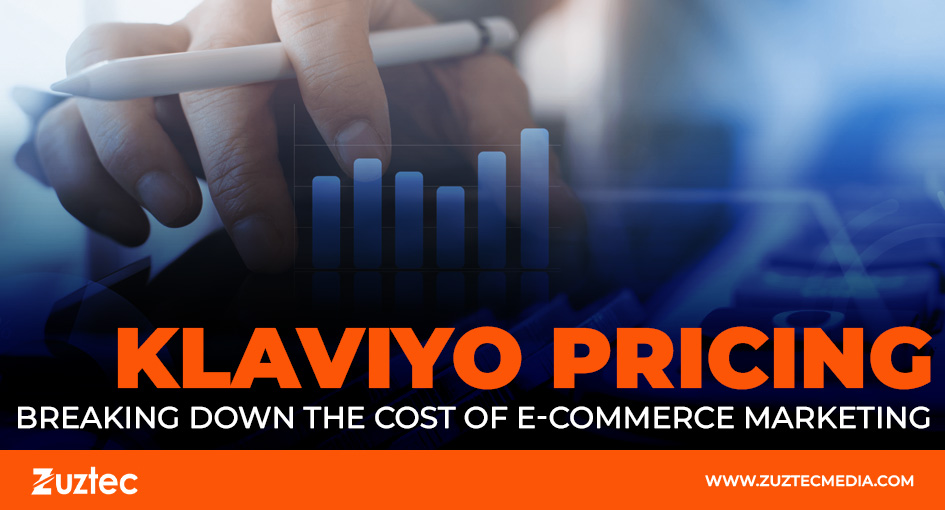
Klaviyo Pricing: Breaking Down the Cost of E-Commerce Marketing
In the fast-paced world of e-commerce, connecting with customers through personalized marketing channels like email and SMS has become essential. Klaviyo, a leading platform in this space, is widely known for its data-driven approach to customer engagement. But for businesses evaluating their marketing stack, Klaviyo pricing is often a major point of consideration. Is it worth the investment? How does it scale with growth? And how does it compare to other options in the market?
Understanding Klaviyo’s pricing model isn’t just about looking at numbers. It’s about evaluating the value the platform delivers at different stages of your business. Whether you’re a small startup dipping your toes into email marketing or a fast-scaling brand managing thousands of contacts, having clarity on what you’ll pay and what you’ll get in return is key to making an informed decision.
Klaviyo Pricing Overview
How Klaviyo’s Pricing Works
Unlike many platforms that offer tiered pricing based on features, Klaviyo includes all of its features—like automation workflows, segmentation, predictive analytics, and A/B testing—at every level. This means you’re not paying more to unlock more tools; instead, your cost scales based on how many people you’re reaching.
For email, Klaviyo offers a free tier for up to 250 contacts and 500 email sends per month. This is ideal for smaller brands that are just getting started. Once your list grows beyond that, the pricing increases incrementally. For instance, a business with 1,000 contacts can expect to pay around $30 per month, while one with 10,000 contacts might pay closer to $150–$200 per month.
If you’re also using SMS, the pricing structure changes. SMS is billed separately based on usage, including messages sent, carrier fees, and phone number types. Klaviyo provides a calculator on its website to estimate these costs, which can be useful when forecasting your marketing budget.
The Value Behind the Price
ROI and Performance-Driven Pricing
One of Klaviyo most talked-about benefits is its revenue attribution feature. Unlike some tools that simply track opens and clicks, Klaviyo ties purchases directly back to individual campaigns and automations. This helps marketers not only justify their spend but also optimize future campaigns for higher returns.
In this sense, Klaviyo pricing can be thought of as performance-aligned. The more your business grows and the more contacts you acquire, the more value you extract from the platform. That’s why many high-growth Shopify and WooCommerce stores continue to choose Klaviyo, even when cheaper tools are available.
Real-World Example: Is It Worth It?
Consider a mid-sized e-commerce store with 5,000 contacts. At around $100 per month, they get access to sophisticated flows like cart abandonment, browse abandonment, and post-purchase follow-ups. If just one of these flows generates 50 orders a month with an average order value of $40, that’s $2,000 in monthly revenue directly tied to Klaviyo. Even if only a portion of that is attributable to the platform’s tools, the ROI is substantial.
For businesses that use both email and SMS, Klaviyo also allows for integrated campaigns. For example, you can automatically send a follow-up SMS if someone doesn’t open your email—a multi-touchpoint strategy that can boost conversions and customer engagement.
Comparing Klaviyo Pricing to Alternatives
Klaviyo vs. Mailchimp
Mailchimp is often considered Klaviyo’s closest competitor, especially among small businesses. While Mailchimp offers a lower price point at the entry level, it limits access to advanced features like behavioral segmentation and dynamic content unless you pay for higher-tier plans. In contrast, Klaviyo gives you full access to features from the start.
Mailchimp’s pricing is more attractive for newsletter-based strategies, but for businesses focused on personalized automation and e-commerce revenue, Klaviyo offers better long-term value despite its higher cost.
Klaviyo vs. Omnisend
Omnisend is another email and SMS platform that targets e-commerce brands. It’s more affordable than Klaviyo at lower contact counts and includes SMS in some of its plans. However, Klaviyo tends to outperform in terms of analytics, predictive features, and deeper segmentation capabilities.
If cost is a primary concern and you’re running a smaller store, Omnisend might be a viable alternative. But for those prioritizing scale and sophistication, Klaviyo pricing often justifies itself.
When Does Klaviyo Make Sense?
Ideal for Data-Driven E-Commerce Brands
Klaviyo’s pricing makes the most sense for brands that intend to make the most of their data. If you’re just sending occasional newsletters, it might be overkill. But for businesses serious about lifecycle marketing—mapping out flows for acquisition, onboarding, retention, and re-engagement—it’s a powerhouse.
It also shines for those with growing product catalogs and diverse audiences. Its predictive analytics can anticipate when a customer is likely to buy again, and its product feeds allow for personalized recommendations based on behavior.
When to Reconsider
That said, Klaviyo may not be the right fit for every business. If you’re just starting out, have fewer than 250 contacts, or don’t plan to engage in segmentation or automation, the free plan is generous. But as your list grows, so will your bill. If you’re not ready to fully utilize the platform’s capabilities, you might be better off starting with a simpler tool until you’re ready to scale.
Ultimately, in evaluating Klaviyo pricing, the most important question isn’t just how much it costs—but how much value it delivers. For brands focused on leveraging customer data, personalizing communication, and driving measurable revenue through email and SMS, Klaviyo offers a robust toolkit that pays for itself many times over.
While the cost may be higher than some entry-level platforms, the feature-rich environment, strong support for e-commerce, and detailed reporting make it a smart investment for growth-focused businesses. Whether you’re managing a modest list or scaling toward hundreds of thousands of contacts, Klaviyo’s pricing model grows with you—without holding back essential features.

